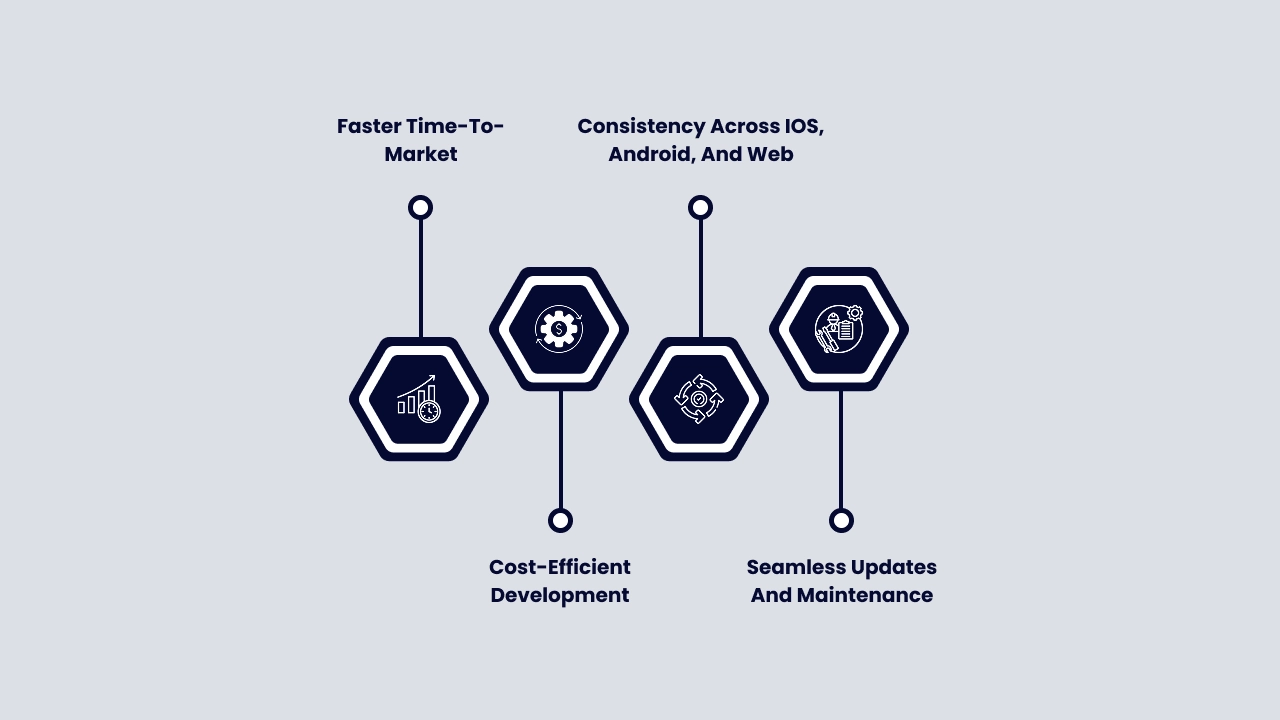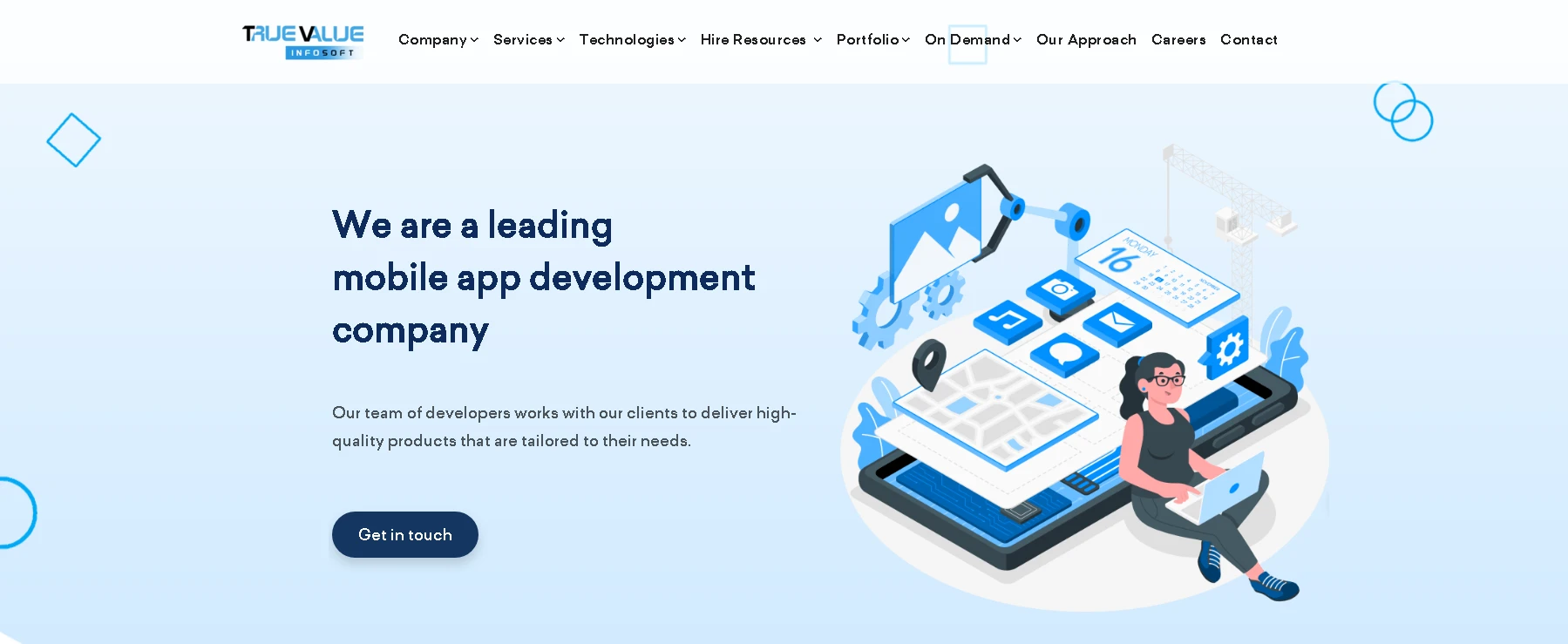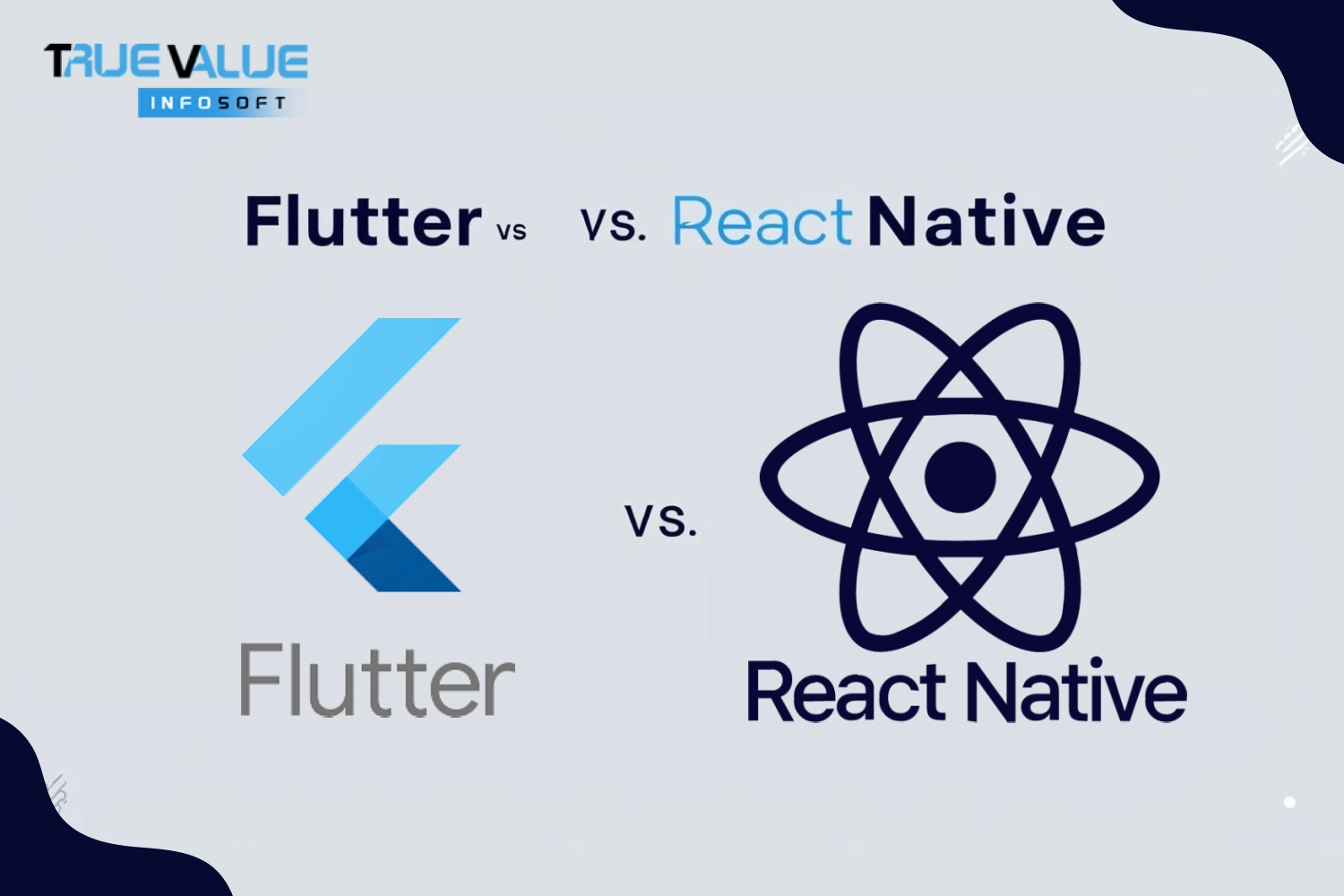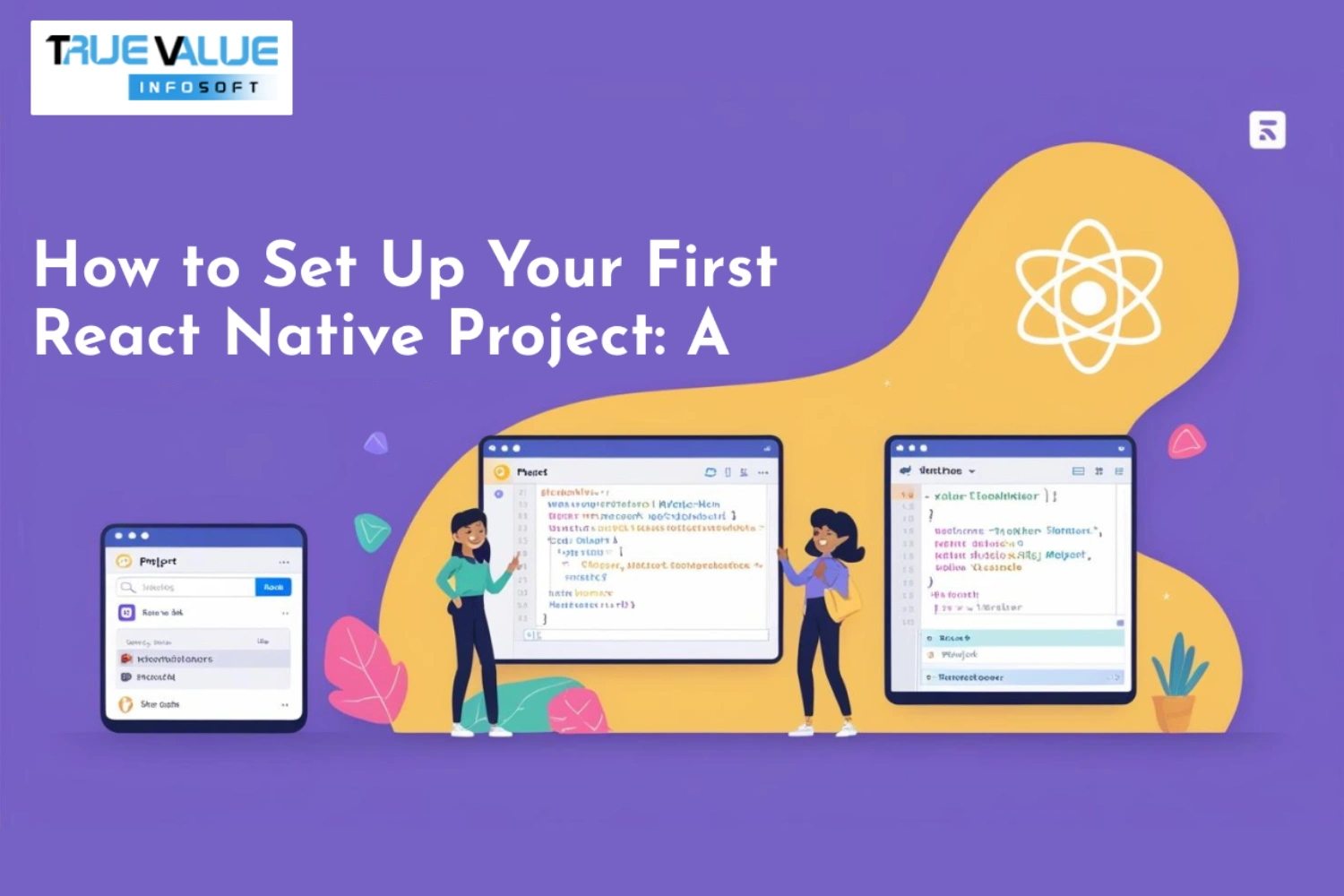Introduction
Are you struggling to decide between Flutter and React Native for your next app development project? If you’re building a cross-platform mobile app and want to ensure maximum performance, faster development, and an exceptional user experience, this is a choice that can make or break your project.
At True Value Infosoft, the best IT company in India, we’ve worked extensively with both Flutter and React Native. We’ve built enterprise apps, startups MVPs, fintech platforms, e-learning solutions, and more using these frameworks. In this in-depth guide, we’ll break down Flutter vs. React Native in 2025 across various dimensions to help you make an informed, confident decision.
What Is Flutter?
Flutter is Google’s open-source UI software development toolkit launched in 2017. It allows developers to build natively compiled applications for mobile, web, and desktop from a single codebase.
- Language: Dart
- Rendering Engine: Skia
- Development Paradigm: Reactive
Flutter provides a widget-based UI system, enabling pixel-perfect control over every element. It’s particularly popular for applications where design, animations, and performance are critical.
What Is React Native?
React Native is Facebook’s open-source framework, introduced in 2015, that allows developers to build mobile apps using JavaScript and React.
- Language: JavaScript / TypeScript
- Rendering: Native components (bridged)
- Development Paradigm: Declarative, component-based
React Native uses native rendering APIs and bridges between JavaScript and native code. It’s widely known for its flexibility and huge ecosystem.
Why Cross-Platform Development Is the Future

In 2025, businesses demand:
- Faster time-to-market
- Cost-efficient development
- Consistency across iOS, Android, and Web
- Seamless updates and maintenance
Cross-platform frameworks like Flutter and React Native solve this by reducing development time by up to 40% compared to building separate native apps.
Performance Benchmarks in 2025
| Feature | Flutter | React Native |
|---|---|---|
| App Startup Time | Faster (thanks to native comp.) | Slightly slower (JS Bridge delay) |
| UI Rendering | Smooth 60 FPS across devices | Good, depends on complexity |
| Animation Performance | Excellent | Moderate (complex UI may lag) |
| Memory Usage | Slightly higher | Lower |
Flutter performs better in UI-heavy and animation-rich apps. React Native performs adequately for apps with standard UIs and business logic.
Development Experience & Productivity
Flutter Pros:
- Hot reload
- Dart is easy to learn
- Fewer bugs due to single codebase
- Integrated tooling with Android Studio, VS Code
React Native Pros:
- Huge NPM package ecosystem
- Flexible architecture
- Code reusability with React for web apps
- Strong support for TypeScript
Verdict:
React Native wins in terms of developer familiarity and ecosystem. Flutter wins for streamlined tooling and cleaner code structure.
UI & UX Capabilities
Flutter UI Strengths:
- High customization
- Consistent look across platforms
- Rich libraries for motion and animation
- Great for branded, design-heavy apps
React Native UI Strengths:
- Uses native components (feels more “native”)
- Easier integration with platform-specific design
- More “web-like” development for React devs
Verdict:
Flutter is the go-to for pixel-perfect design, while React Native offers better native UI consistency.
Community Support & Ecosystem
Flutter in 2025:
- Backed by Google
- Growing community with packages on pub.dev
- Strong support for desktop and web
React Native in 2025:
- Massive global developer base
- Thousands of community plugins
- Meta continues to invest heavily
Verdict:
React Native has a more mature and expansive community, while Flutter is catching up fast, especially in enterprise circles.
Popular Apps Built with Each Framework
Popular Flutter Apps:
Popular Flutter Apps:
Both frameworks power top-tier apps — your choice depends on project requirements more than popularity.
Testing, Debugging & Maintenance
Flutter:
- Built-in testing support (unit, widget, integration)
- Dart DevTools for debugging
- Better for long-term maintenance (due to full control)
React Native:
- Rich third-party testing tools (Jest, Detox)
- Can be harder to debug due to bridging
- Frequent dependency updates can be both a plus and a minus
Verdict:
Flutter is more self-contained and thus easier to test and maintain at scale.
Business Considerations (Cost, Time-to-Market, ROI)
Flutter for Business:
- Faster development with fewer platform-specific tweaks
- Better control = fewer bugs = less maintenance cost
- Ideal for MVPs, startups, and design-first brands
React Native for Business:
- Ideal for apps that need native feel but fast development
- Great developer availability
- Easy team onboarding (JavaScript devs are everywhere)
ROI:
Both offer high ROI, but Flutter often results in fewer long-term bugs and cost overruns due to its full-stack control.
Why Choose True Value Infosoft for Your Flutter or React Native App Development Project?

When choosing between Flutter and React Native, selecting the right technology is only half the battle — the other half lies in choosing the right development partner. Here’s why True Value Infosoft is the go-to choice for businesses looking for expert cross-platform app development:
Customized Tech Stack Recommendations
- We evaluate your goals, timeline, and target audience to suggest the best-fit technology — Flutter or React Native.
Agile Development Process
- Fast, flexible sprints with real-time updates.
- Continuous integration and testing to ensure a bug-free experience.
- MVP to enterprise-level app delivery within competitive timelines.
UI/UX That Stands Out
- Our Flutter team excels in crafting pixel-perfect, responsive designs.
- Our React Native developers ensure smooth, native-like performance across platforms.
- Dedicated design experts who turn ideas into stunning interfaces.
Recognized as a Top App Development Company
- Trusted by startups, SMBs, and enterprises across the globe.
- Rated highly for innovation, client satisfaction, and delivery excellence.
True Value Infosoft is not just a development company — we’re your strategic tech partner for digital success.
Use Cases: When to Choose Flutter
Choose Flutter when you:
- Need custom UI and animations
- Want to release apps for iOS, Android, Web, and Desktop
- Have a small dev team
- Want to scale design-heavy products quickly
- Prefer a single unified tech stack
Use Cases: When to Choose React Native
Choose React Native when you:
- Have React/JavaScript developers on your team
- Need deeper integration with native SDKs
- Are building apps with platform-specific UI needs
- Want to share code between web and mobile apps
FAQs
Technically yes, but it's complex. It’s best to choose one framework to avoid performance and compatibility issues.
Flutter is often better for MVPs due to fast UI building and consistency across platforms.
Both are backed by tech giants (Google, Meta). They’re regularly updated and reliable for long-term projects.
Both integrate well with Firebase, REST APIs, GraphQL, and other backend services.
Absolutely! We offer expert Flutter and React Native development services. Reach out for a free consultation.





